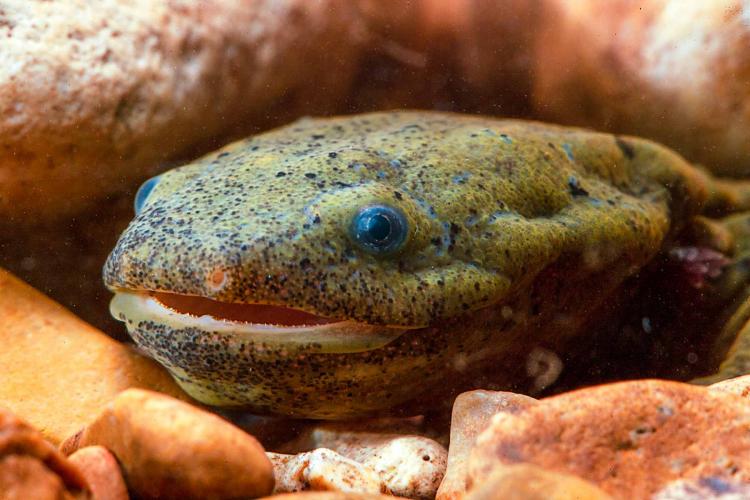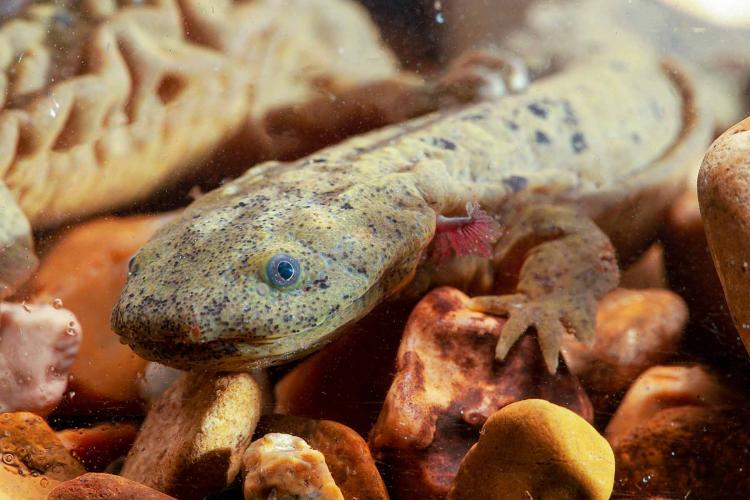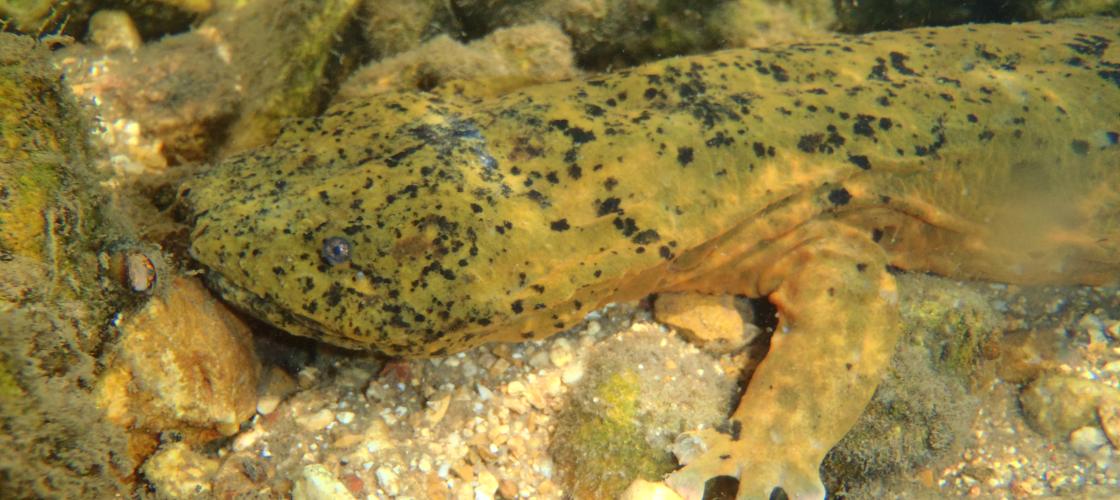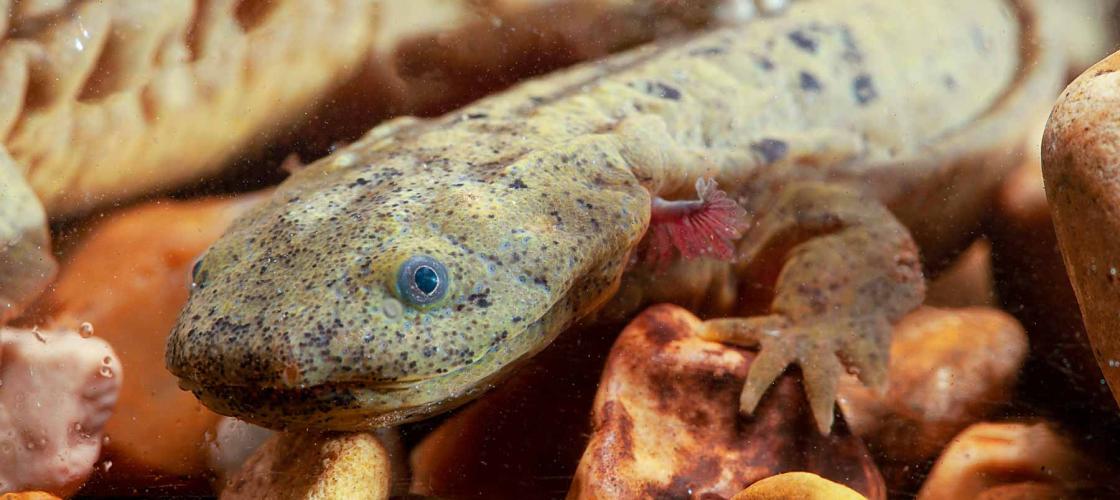The 10,000 hellbender was recently released in the Ozark stream where the first successful release took place in 2008. This milestone is offering new hope for two subspecies of North American hellbenders that are both state and federally endangered. Watch how the St. Louis Zoo, MDC, and partners are working together to restore these salamanders.
The future is getting brighter for hellbenders, an amphibian in decline. MDC Herpetologist, Jeff Briggler credits, “the long-term dedication of state and federal agencies and the St. Louis Zoo” leading up to the “largest number of hellbenders released in the world.” The enthusiasm of releasing the 10,000th hellbender was an exciting moment in Missouri’s outdoors, with Jeff noting, “We did it. We’re here. Now we can help bolster the population.”
Hellbenders have even inspired a song by St. Louis artists FIRE DOG led by Mark Pagano.
Songwriter : Mark Pagano
Artist : FIRE DOG
Voiceover : Bruce Cockburn
Marko Polo Music
Hellbender Life
Hellbenders are strange looking creatures. The phrase, “ a face only a mother could love” comes to mind. Some refer to them as “snot otters”. Where they got their name is unclear, but a deeper dive shows behind those odd looks are fascinating functions geared for underwater life, and why it’s important to help them thrive.
- Hellbenders are giant aquatic salamanders, the largest amphibian species in the U.S. Both subspecies, eastern hellbenders and Ozark hellbenders are in the state, with Ozark hellbenders only found in Missouri and Arkansas.
- Hellbenders move among the rocks in clear, mostly spring-fed waters. Their health in streams is an indicator of water quality that can affect other species as well as us.
- Their streamlined bodies and flat heads help them maneuver through rocks and navigate currents as they walk along the bottom of rivers. They breathe through the folds in their skin that look like lasagna noodles. Hellbenders mainly eat crayfish and help maintain those populations. They will also consume small fish, insects, and snails.
- Predators for adult hellbenders include river otters and raccoons. Juveniles face many threats from fish, reptiles, birds, mammals, and larger hellbenders. The biggest threats to hellbenders, which have seen declines of 70%, is altered and degraded habitats and water quality, disease, and over collecting. Hellbenders cannot be collected and should be immediately returned to the waters if caught on a fishing line.
- You can help hellbenders by not disturbing them or their rocky habitats which are essential for nesting, and keeping our waters clean.
The successful work of raising hellbenders continues at the St. Louis Zoo, accompanied by MDC research and release in the wild, along with the work of state and federal partners, is buying much needed time. “ We have bought this animal 30 to 40 years,” notes MDC Herpetologist Jeff Briggler, “so the future is looking bright.”
Discover more about Ozark Hellbenders.
Discover more about eastern Hellbenders.












Recent Posts
























